An Islanding Detection Technique for Inverter-Based Distributed Generation in Microgrids
Abstract
:1. Introduction
- It should be able to detect islanding events in a wide range of operational conditions.
- It should not operate incorrectly for non-islanding disturbances, e.g., short-circuit faults and load changes.
- It should be as low-cost as possible.
- It should be as simple as possible.
- It should be compatible with and easily implementable in most of the existing infrastructures and systems.
2. Proposed Passive Islanding Detection Technique
2.1. Concept of the Proposed Method
2.2. New VoI Index
2.3. Proposed Algorithm for Islanding Detection Technique
3. Test System Model and Case Studies
3.1. Test System Model
3.2. Test Cases Studies
4. Results and Discussion
4.1. Islanding Event
4.2. Single Phase to Ground Fault
4.3. Three-Phase to Ground Fault
4.4. Sudden Connection of Load
4.5. Capacitor Switching
4.6. Non-Detection Zone
5. Conclusions
- (1)
- It is quick enough to detect an islanding event in less than 2 s, which is a requirement according to IEEE Std. 1547-2018.
- (2)
- The NDZ is narrow when compared to other traditional passive methods.
- (3)
- It has a decentralized operation principle, which may simplify and reduce the cost of implementation.
- (4)
- It is compatible with traditionally used distribution network infrastructures.
- (5)
- It is robust robust against system short circuit faults and load switching, as well as both stable and unstable power swings.
Author Contributions
Funding
Data Availability Statement
Conflicts of Interest
Nomenclature
| DG | Distributed Generation |
| MG | Microgrid |
| NDZ | Non-Detection Zone |
| PCC | Point of Common Coupling |
| PMU | Phasor Measurement Unit |
| PoC | Point of DG Connection |
| RoCoV | Rate of Changes of the Voltage |
| VoI | The ratio of the magnitudes of the voltage and current |
| µPMU | micro-Phasor Measurement Unit |
References
- Kim, M.-S.; Haider, R.; Cho, G.-J.; Kim, C.-H.; Won, C.-Y.; Chai, J.-S. Comprehensive review of islanding detection methods for distributed generation systems. Energies 2019, 12, 837. [Google Scholar] [CrossRef] [Green Version]
- Subramanian, K.; Loganathan, A.K. Islanding detection using a micro-synchrophasor for distribution systems with distributed generation. Energies 2020, 13, 5180. [Google Scholar] [CrossRef]
- Kumar, S.A.; Subathra, M.S.P.; Kumar, N.M.; Malvoni, M.; Sairamya, N.J.; George, S.T.; Suviseshamuthu, E.S.; Chopra, S.S. A novel islanding detection technique for a resilient photovoltaic-based distributed power generation system using a tunable-q wavelet transform and an artificial neural network. Energies 2020, 13, 4238. [Google Scholar] [CrossRef]
- Bekhradian, R.; Davarpanah, M.; Sanaye-Pasand, M. Novel approach for secure islanding detection in synchronous generator based microgrids. IEEE Trans. Power Deliv. 2019, 34, 457–466. [Google Scholar] [CrossRef]
- Singh, A.R.; Lei, D.; Kumar, A.; Singh, R.; Meena, N.K. Microgrid System. In Microgrid: Operation, Control, Monitoring and Protection; Ray, P., Biswal, M., Eds.; Springer: Singapore, 2020; pp. 1–25. [Google Scholar] [CrossRef]
- Hosseinzadeh, M.; Rajaei Salmasi, F. Islanding fault detection in microgrids—A survey. Energies 2020, 13, 3479. [Google Scholar] [CrossRef]
- Zheng, T.; Yang, H.; Zhao, R.; Kang, Y.C.; Terzija, V. Design, evaluation and implementation of an islanding detection method for a micro-grid. Energies 2018, 11, 323. [Google Scholar] [CrossRef] [Green Version]
- Ghalavand, F.; Alizade, B.A.M.; Gaber, H.; Karimipour, H. Microgrid islanding detection based on mathematical morphology. Energies 2018, 11, 2696. [Google Scholar] [CrossRef] [Green Version]
- Pinto, J.O.C.P.; Moreto, M. Protection strategy for fault detection in inverter-dominated low voltage AC microgrid. Electr. Power Syst. Res. 2021, 190, 106572. [Google Scholar] [CrossRef]
- Zarei, S.F.; Mokhtari, H.; Blaabjerg, F. Fault detection and protection strategy for islanded inverter-based microgrids. IEEE J. Emerg. Sel. Top. Power Electron. 2019, 1. [Google Scholar] [CrossRef]
- IEEE Standard for Interconnecting Distributed Resources with Electric Power Systems; IEEE Std 1547-2003; IEEE: Piscataway, NJ, USA, 2003.
- IEEE Recommended Practice for Utility Interface of Photovoltaic (PV) Systems; IEEE Std 929-2000; IEEE: Piscataway, NJ, USA, 2000.
- Photovoltaic (PV) Systems-Characteristics of the Utility Interface; IEC Std 61727; IEC: Geneva, Switzerland, 2004.
- Mishra, M.; Chandak, S.; Rout, P.K. Taxonomy of Islanding detection techniques for distributed generation in microgrid. Renew. Energy Focus 2019, 31, 9–30. [Google Scholar] [CrossRef]
- Bakhshi-Jafarabadi, R.; Sadeh, J. New voltage feedback-based islanding detection method for grid-connected photovoltaic systems of microgrid with zero non-detection zone. IET Renew. Power Gener. 2020, 14, 1710–1719. [Google Scholar] [CrossRef]
- Bakhshi-Jafarabadi, R.; Sadeh, J.; Popov, M. Maximum power point tracking injection method for islanding detection of grid-connected photovoltaic systems in microgrid. IEEE Trans. Power Deliv. 2020, 1. [Google Scholar] [CrossRef]
- Paiva, S.C.; de Araujo Ribeiro, R.L.; Alves, D.K.; Costa, F.B.; Rocha, T.D. A wavelet-based hybrid islanding detection system applied for distributed generators interconnected to AC microgrids. Int. J. Electr. Power Energy Syst. 2020, 121, 106032. [Google Scholar] [CrossRef]
- Chen, X.; Li, Y.; Crossley, P. A novel hybrid islanding detection method for grid-connected microgrids with multiple inverter-based distributed generators based on adaptive reactive power disturbance and passive criteria. IEEE Trans. Power Electron. 2019, 34, 9342–9356. [Google Scholar] [CrossRef]
- Zheng, X.; Zhang, R.; Chen, X.; Sun, N. Improved three-phase AFD islanding detection based on digital control and non-detection zone elimination. Energies 2018, 11, 2421. [Google Scholar] [CrossRef] [Green Version]
- Merino, J.; Mendoza-Araya, P.; Venkataramanan, G.; Baysal, M. Islanding detection in microgrids using harmonic signatures. IEEE Trans. Power Deliv. 2015, 30, 2102–2109. [Google Scholar] [CrossRef] [Green Version]
- Khamis, A.; Xu, Y.; Dong, Z.Y.; Zhang, R. Faster detection of microgrid islanding events using an adaptive ensemble classifier. IEEE Trans. Smart Grid 2018, 9, 1889–1899. [Google Scholar] [CrossRef]
- Mlakić, D.; Baghaee, H.R.; Nikolovski, S. A novel ANFIS-based islanding detection for inverter-interfaced microgrids. IEEE Trans. Smart Grid 2019, 10, 4411–4424. [Google Scholar] [CrossRef]
- Baghaee, H.R.; Mlakić, D.; Nikolovski, S.; Dragicčvić, T. Anti-islanding protection of PV-based microgrids consisting of PHEVs using SVMs. IEEE Trans. Smart Grid 2020, 11, 483–500. [Google Scholar] [CrossRef]
- Xie, X.; Huang, C.; Li, D. A new passive islanding detection approach considering the dynamic behavior of load in microgrid. Int. J. Electr. Power Energy Syst. 2020, 117, 105619. [Google Scholar] [CrossRef]
- Abdelsalam, A.A.; Salem, A.A.; Oda, E.S.; Eldesouky, A.A. Islanding detection of microgrid incorporating inverter based DGs using long short-term memory network. IEEE Access 2020, 8, 106471–106486. [Google Scholar] [CrossRef]
- IEEE Standard for Interconnection and Interoperability of Distributed Energy Resources with Associated Electric Power Systems Interfaces; IEEE Std 1547-2018 (Revision of IEEE Std 1547-2003); IEEE: Piscataway, NJ, USA, 2018; pp. 1–138. Available online: https://ieeexplore.ieee.org/document/8332112 (accessed on 6 April 2018).
- Karimi, M.; Azizipanah-Abarghooee, R.; Uppal, H.; Hong, Q.; Booth, C.; Terzija, V. Smart Integrated Adaptive Centralized Controller for Islanded Microgrids under Minimized Load Shedding. In Proceedings of the 2017 5th International Istanbul Smart Grid and Cities Congress and Fair (ICSG), Istanbul, Turkey, 19–21 April 2017. [Google Scholar]
- Raza, S.; Mokhlis, H.; Arof, H.; Laghari, J.A.; Mohamad, H. A sensitivity analysis of different power system parameters on islanding detection. IEEE Trans. Sustain. Energy 2016, 7, 461–470. [Google Scholar] [CrossRef]





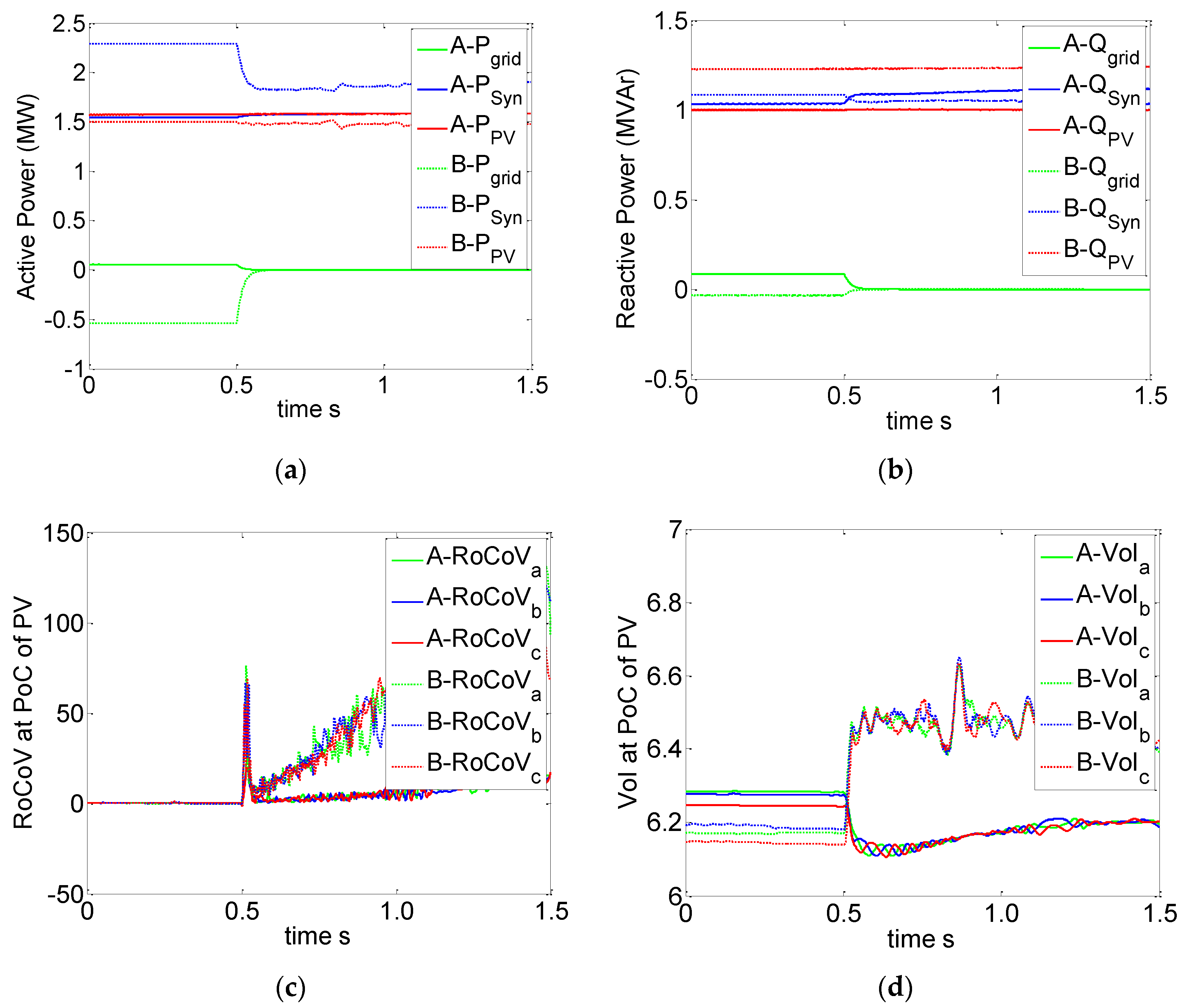



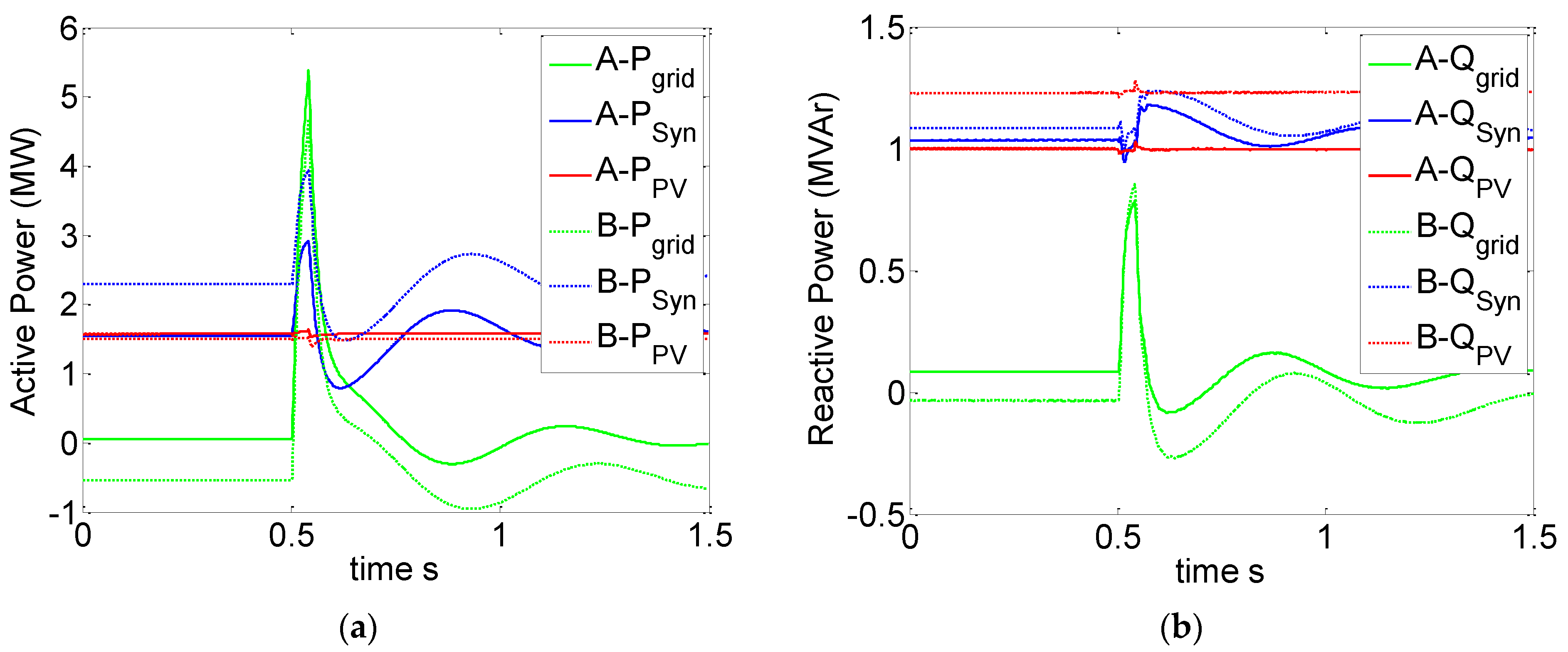
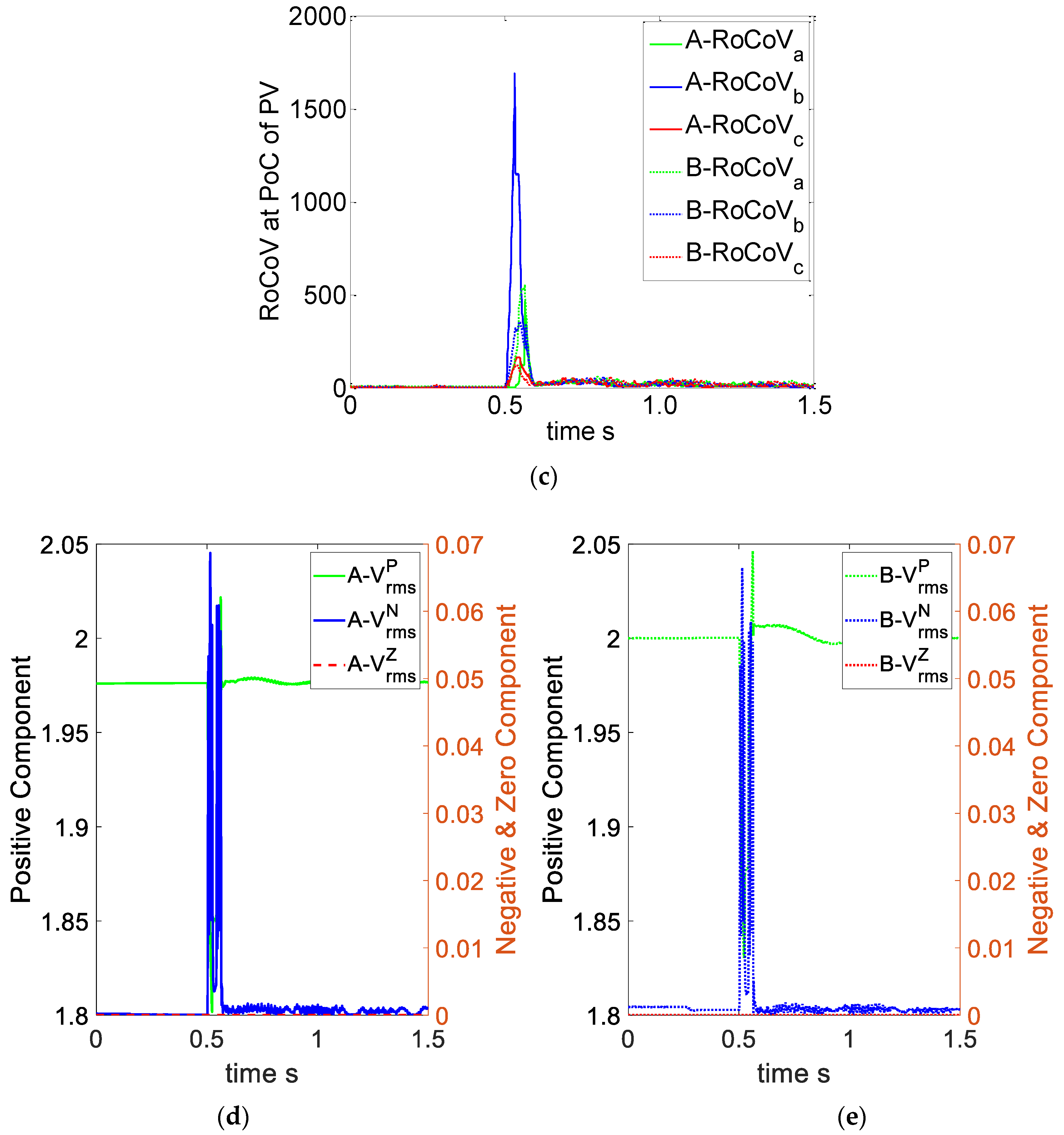

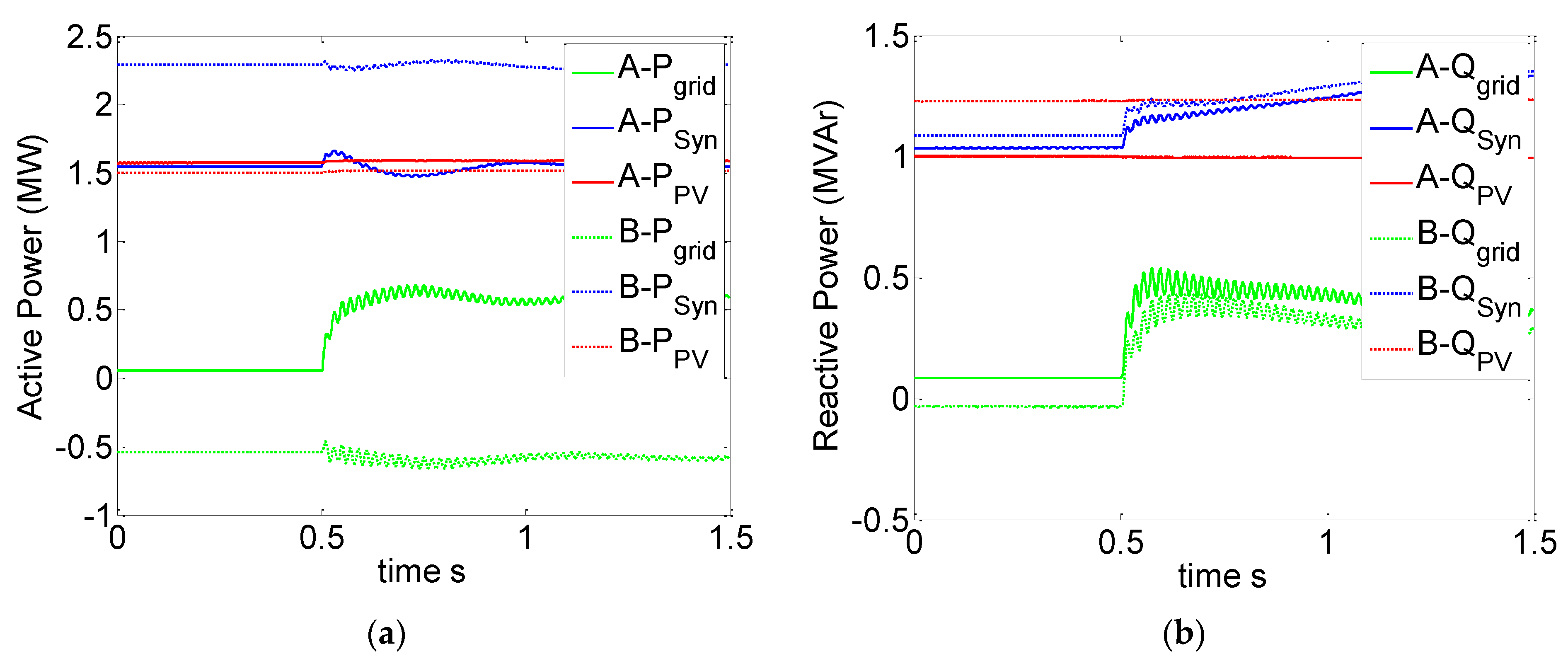
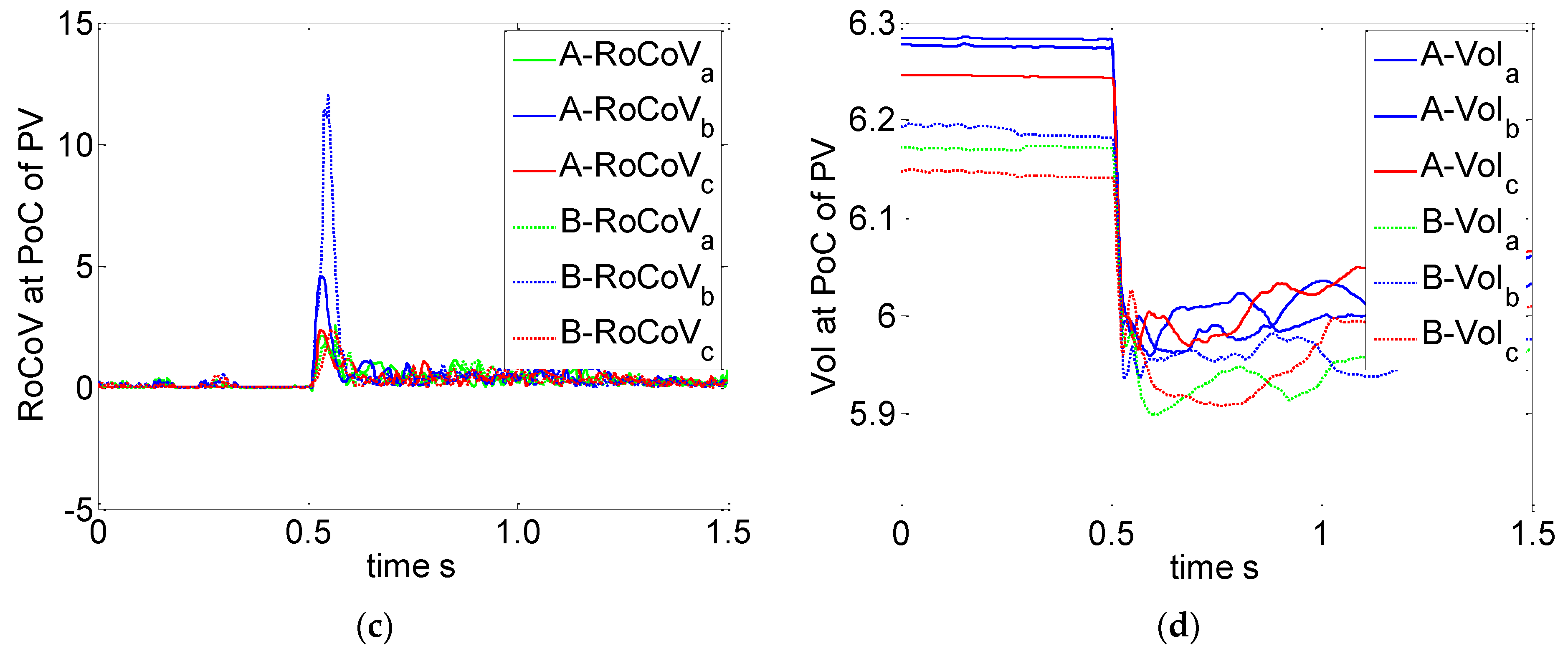




| Case Studies | Description |
|---|---|
| Case 1 | Islanding event |
| Case 2 | Single phase to ground fault |
| Case 3 | Three-phase to ground fault |
| Case 4 | Sudden connection of load |
| Case 5 | Capacitor switching |
Publisher’s Note: MDPI stays neutral with regard to jurisdictional claims in published maps and institutional affiliations. |
© 2020 by the authors. Licensee MDPI, Basel, Switzerland. This article is an open access article distributed under the terms and conditions of the Creative Commons Attribution (CC BY) license (http://creativecommons.org/licenses/by/4.0/).
Share and Cite
Karimi, M.; Farshad, M.; Hong, Q.; Laaksonen, H.; Kauhaniemi, K. An Islanding Detection Technique for Inverter-Based Distributed Generation in Microgrids. Energies 2021, 14, 130. https://doi.org/10.3390/en14010130
Karimi M, Farshad M, Hong Q, Laaksonen H, Kauhaniemi K. An Islanding Detection Technique for Inverter-Based Distributed Generation in Microgrids. Energies. 2021; 14(1):130. https://doi.org/10.3390/en14010130
Chicago/Turabian StyleKarimi, Mazaher, Mohammad Farshad, Qiteng Hong, Hannu Laaksonen, and Kimmo Kauhaniemi. 2021. "An Islanding Detection Technique for Inverter-Based Distributed Generation in Microgrids" Energies 14, no. 1: 130. https://doi.org/10.3390/en14010130







